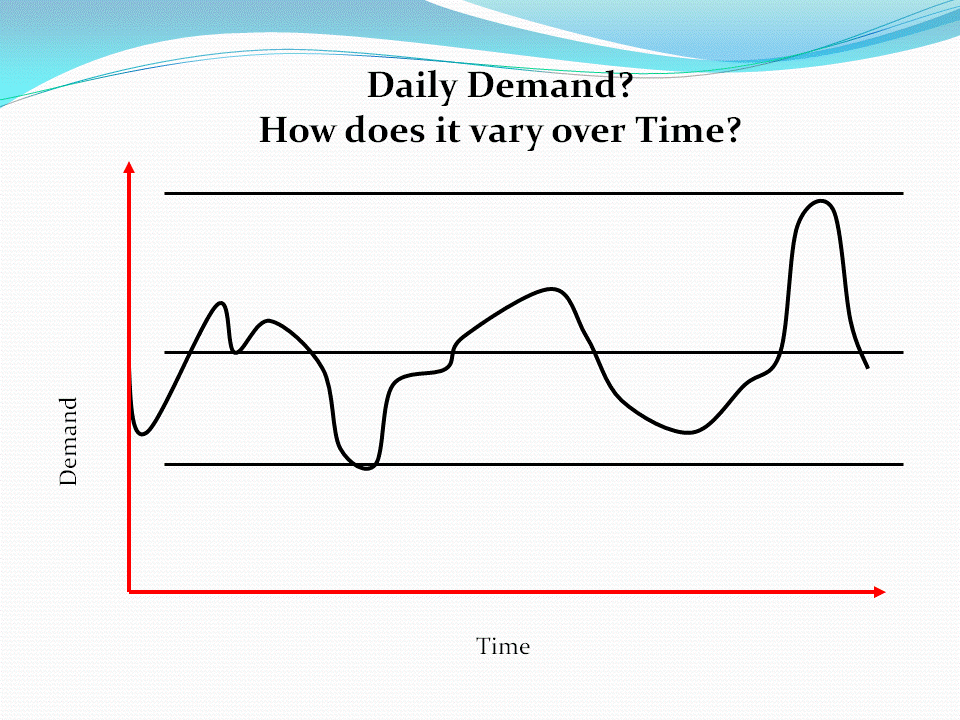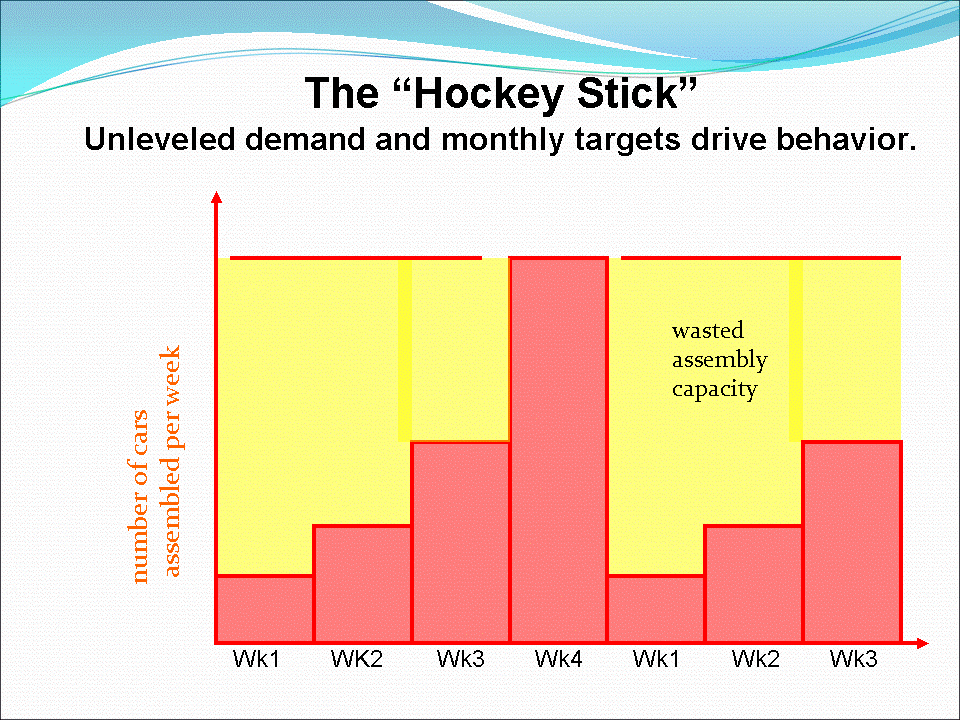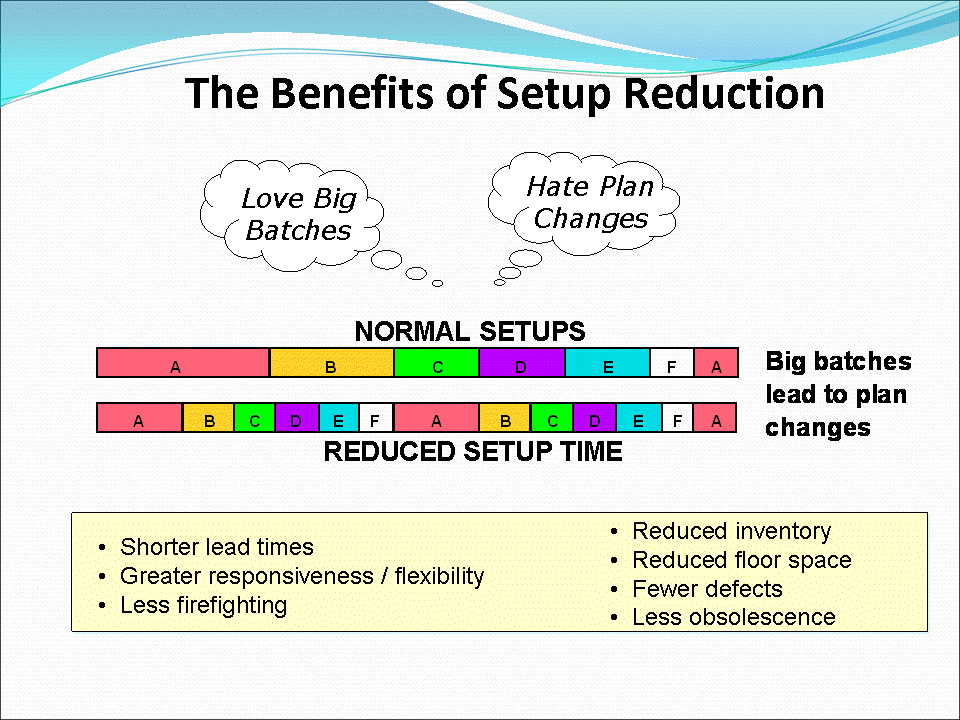What is Mura?
Most Lean practitioners that I have met have little idea as to what is Mura only really being aware of Muda or the seven wastes. Within the Toyota Production system however, which spawned what we now call lean, they concentrate on three main areas of waste; Mura (unevenness), Muri (overburden) and Muda (non value adding activities).
While Muda is very much something that everyone can identify with and be happy tackling most companies and practitioners fail to identify the other two categories, Mura and Muri, which are often the main causes of the Muda in the first place.
Mura is unevenness or inconsistency; it is the uneven demand levels that we often see in our companies from day to day or even month to month. We fail to smooth out production and try to rush as fast as we can from one large batch to the next with little thought as to what the customers actually need.
Examples of Mura
Customer demand can often appear to be erratic but often there is an underlying pattern that can be identified. We may find that our customers will demand 2000 products on a Monday and Tuesday, 1500 on a Wednesday and Thursday, and just 500 on Friday. Our operators find themselves rushed off their feet on Monday and Tuesday, and by Friday are twiddling their thumbs trying to find work to do. While this may be a good way for some to start relaxing for the weekend it is hardly good for the people in your production to have such peaks and troughs in demand. We should seek to level out the production and run at the 1500 part average throughout the week.
We also find that the measures that are placed on us drive uneven production; the famous hockey stick graph is the most obvious representation of Mura. Everyone works like crazy in the final week of the month depleting every sub assembly and production part that you have to “get the numbers out” before the end of the month. Little thought is given to actual customer demand; they just need to get as many parts finished as possible so that targets for the month are met. The first week of the month is then very slow as sub assemblies and supplied parts have been depleted and it takes time to build up production rate again into the month.
You see the same issues in many service industries also; a consultant works hard at his marketing and networking to build up some business, but then finds himself working hard facing customers every day before finding that they have run out of potential customers when these projects finish as the marketing stopped while they delivered.
Reducing Mura
Reducing Mura can be very difficult and something that many companies are reluctant and resistant to tackle. More often than not we run large “economical” batches through our production and we drive people with measures that encourage poor behavior.
We need to smooth out our production so that everyone is producing at a constant and predictable rate. We also need to smooth out the mix of products that we are making.
Typically we will build a huge batch of products as this appears to be the most economical for the company; however this leads to you working on products that the customer does not want while failing to build what they do want.
We have to reduce batch sizes and introduce flow to allow us to provide a smoother and more predictable production schedule. Rather than starting the week with a large batch of product A, followed by a batch each of B and C through Wed and Thurs and Batch of D on Friday we should seek to run some of each product every day. If we build some of every product each day when the customer asks for product D they do not have to wait until Friday until you can produce it and you do not have to interrupt and disrupt production if you HAVE to make some D early.
Production Leveling
We do not have to treat every job as a sprint and try to do everything as quickly as we can; we need to look at the takt time for your customer requirement. If your customers want 1200 parts per week and you have 5 eight hour shifts with 2400 minutes available then you need to produce one part every 2 minutes. This is the Takt time of your process, Takt time basicly being the heart beat of your process or the drum beat which you should follow.
Therefore you need to balance your processes so that they provide you with one part every 2 minutes, this will keep everything moving smoothly and provide your customer with exactly what they need.
Where you have mixed requirements you should endeavor to build batches that are as small as possible. Ideally one! So instead of running large batches across several days and customers having to wait often weeks for their product to find its turn within your schedule you run small batches of everything each day on a regular basis.
Every business is different, while some have seasonal demands that have to be catered for and others have an almost infinite variety of products that a customer could call for; but all have an underlying pattern that is predictable and can be used to create a basis for a smooth and regular basis for your production with a little thought.
Heijunker boards or boxes are a simple method of doing this to help smooth out your production planning. A board is broken up into time “buckets” for the day and work is allocated for each bucket of time ensuring that everyone knows exactly what should be run at a specific time and how long it will be run for.
Kanban systems are also used to ensure that your production remains smooth, the kanban system enables you to pull production through your operations at the speed that the customer is removing product. It also allows you to match what the customer is taking rather than building parts that customers might want against a schedule.



